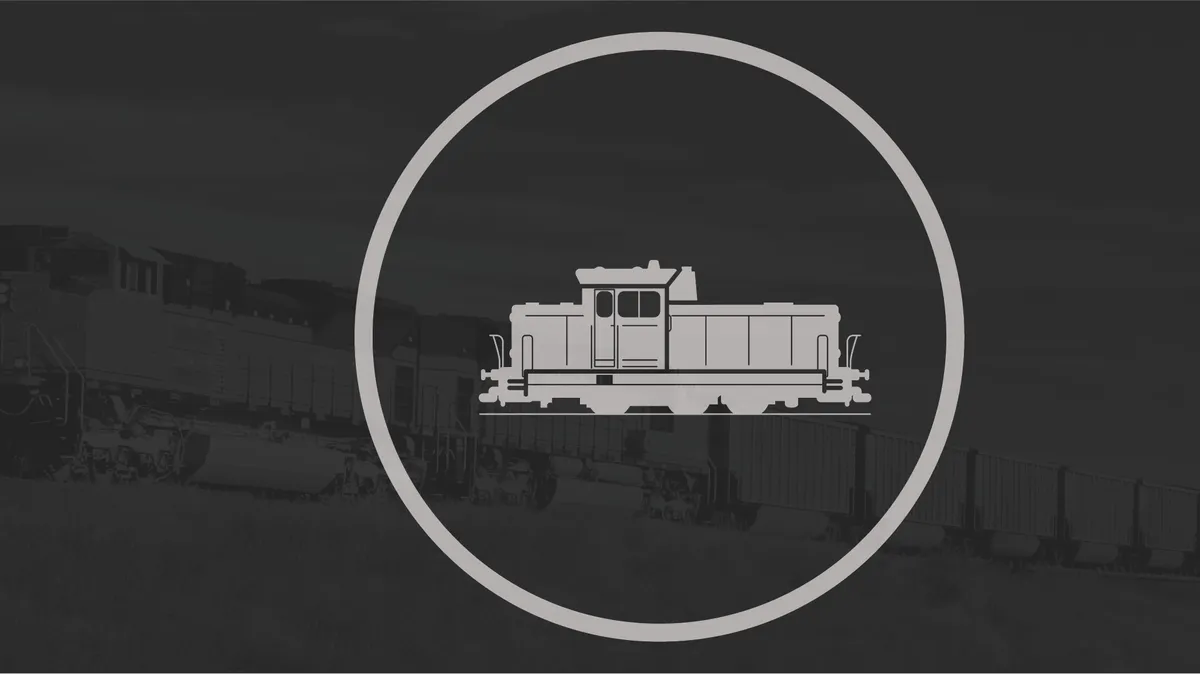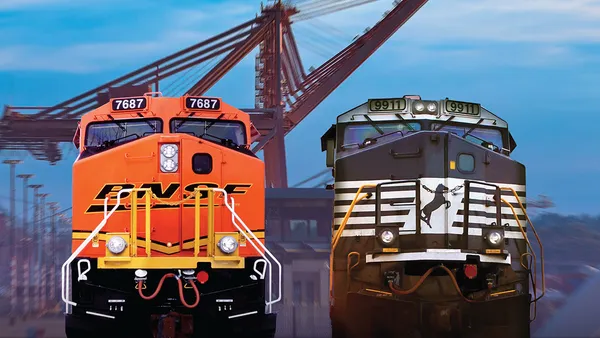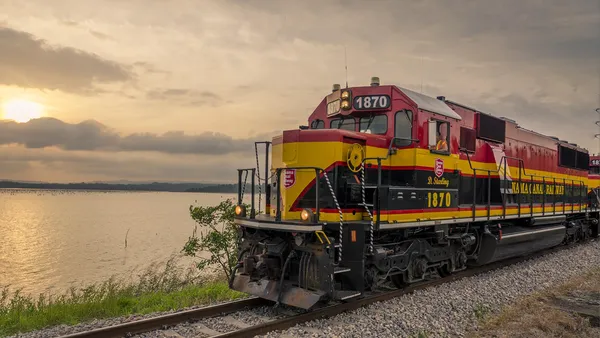Dive Brief:
- U.S. railroads originated 740,171 carloads in April 2020, a 28% year-over-year (YoY) decline, and 912,922 intermodal containers, a 13% YoY drop, according to the latest numbers from the Association of American Railroads (AAR).
- "Perhaps most notably, automobile loadings improved to about one-third the normal level as assembly plants began the intricate process of reopening. While this is still a long way from where we would like to be, it is far better than the ten percent of norm of only two weeks ago," AAR Senior Vice President John T. Gray said in a statement.
- Motor vehicles and parts volume was down 49,341 carloads or 75% year over year in May, according to AAR.
Dive Insight:
The slow return of automotive volume to the market is welcome progress toward normalcy for rail carriers. It is still unclear if the market has reached the bottom of the volume valley, but carriers expect improvement through the summer.
"Railroad commentary on volumes was incrementally more positive vs several weeks ago and most of the railroads believe May will be the bottom in activity with gradual improvement in June," UBS wrote in a research note earlier this month following its industrial conference.
Union Pacific said earlier this year its second-quarter volume would fall about 25%, but if current trends hold, the railroad expects that to be closer to 20%, Union Pacific CFO Jennifer Hamann said during the Deutsche Bank 2020 Global Industrials & Materials Summit earlier this month.
"We've come off the volume lows we experienced back in April and are starting to see a more positive trend," Hamann. "While I think its probably a little too soon to make a definitive statement about hitting the bottom, business levels are looking a bit better."
Automotive volume was down more than 80% for Union Pacific. The early increases following factory restarts have been in auto parts, but finished vehicle shipments are also showing an upward trend, Hamann said, later adding that automotive factories are not producing at their pre-pandemic levels. Factories in the U.S. began reopening toward the middle of May and Mexican factories followed shortly after.
Factories are seeing demand from car lots that saw "better than expected" demand during the pandemic lockdowns, according to The Wall Street Journal. But sustained consumer demand will be a key factor when it comes to automotive volume moving forward, Hamann said.
The rail industry has also seen some competition from what Hamann called a "loose" trucking market, though rates in trucking are starting to rise.
There are encouraging signs for shippers still on the market with the average train velocity improving for all Class I railroads in the 23rd week of the year. Dwell times have also fallen, except for Canadian Pacific and Canadian National, according to the most recent rail numbers from UBS.















